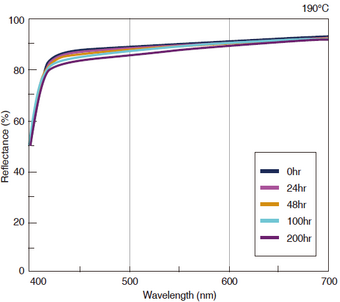- Product Info
- SUMIKASUPER LCP
- OA/LED applications
SUMIKASUPER LCP for OA/LED applications
SUMIKASUPER LCP Selection Guide for Office Automation Applications
What are the fixed parts of OA equipment?
The fusing section of a multifunction printer (MFP) and laser beam printer (LBP) generally uses a method in which powder toner transferred onto paper is fused (fixed) to the paper using high temperature and pressure. As plastic parts, they are broadly classified into two types: "fusing section parts" and "parts surrounding the fusing section."
"Parts of the fixing unit" are parts that support a high-temperature heat source of 200 to 350 degrees Celsius, and parts that are used in close proximity to the heat source. "Parts around the fixing unit" are parts that transport paper before and after fixing, and covers that cover the entire fixing unit.
Required material properties
The "fixing section parts" require different heat resistance temperatures depending on the fixing method, so materials must have the appropriate heat resistance. Parts that support the heat source of the fixing section must have heat storage properties from the perspective of thermal efficiency. In addition, parts that come into direct contact with the high-speed rotating film must have sliding properties.
On the other hand, "parts around the fixing unit" such as guides for transporting paper and covers that cover the entire fixing unit require low warpage to prevent paper jams and to keep the pressure during fixing constant in the entire length direction. In addition, thin-wall flow during molding is also required to achieve thin-walled products.
Grade selection guide for fixing parts of OA equipment (printers, MFPs, LBPs)
For "fuser parts," a wide range of materials can be selected depending on the fusing method, from the ultra-heat-resistant E5000 series to the E6000HF and SV6000HF series that emphasize other characteristics. If heat storage and sliding properties are required, we recommend E5204L, E4205R, and E6205L, which have low thermal conductivity and good surface smoothness.
For "parts around the fixing part", the E6000HF and SV6000HF series are suitable from the perspective of thin-wall flowability. Among them, E6808LHF and SV6808THF are recommended as grades with low warpage and good thin-wall flowability.
Table 6-5-1 SUMIKASUPER LCP grades for office automation applications
| Types of parts in the fixing section | Required characteristics | Recommended Grade |
|---|---|---|
| Fixing part parts | standard | E6808LHF, E6007LHF-MR, E6006L, E4006L, E5006L, etc.* |
| Heat storage, sliding properties | E6205L, E4205R, E5204L | |
| Parts around the fixing section | Low warpage, high fluidity | E6000HF, SV6000HF series (E6808LHF, SV6808THF, etc.) |
*Deflection temperature under load: E6808LHF: 274°C, E6007LHF-MR: 269°C, E6006L: 284°C, E4006L: 324°C, E5006L: 355°C
SUMIKASUPER LCP for LED applications
What is the high reflectance grade?
This molding material combines our proprietary LCP and compound technology to achieve both high reflectivity and high mechanical strength.
Features of high reflectance grade
- Excellent heat resistance
The LED grade uses LCP as the base polymer, which gives it excellent heat resistance. As there is almost no loss in reflectance due to heat, it is suitable as a packaging material for high-brightness, high-power LEDs. - High self-extinguishing properties
The base polymer, LCP, has a high limiting oxygen index, so it exhibits UL94 V-0 flame retardancy without the addition of flame retardants. - Stable molding processability
Like general grades of LCP, it exhibits stable moldability in thin-wall injection molding. - Low water absorption
The base polymer, LCP, has the lowest water absorption of any resin material, so it exhibits excellent moisture absorption and reflow properties.
SZ6709L characteristics table
Table 6-8-1 SZ6709L characteristics table
| Item | Test method | unit | SZ6709L | |
|---|---|---|---|---|
| Molded product color | L | - | - | 91.0 |
| a | -0.3 | |||
| b | 5.5 | |||
| Reflectivity | 640nm | JIS K7105-1981 | % | 92 |
| 520nm | 90 | |||
| 460nm | 88 | |||
| Water absorption rate | ISO 62 | % | 0.02 | |
| Specific gravity | ASTM D792 | - | 1.89 | |
| Mold shrinkage | MD | Sumitomo Chemical Method | % | 0.17 |
| TD | 0.80 | |||
| Tensile strength | ASTM D638 | MPa | 115 | |
| Tensile elongation | ASTM D638 | % | 5.0 | |
| Bending strength | ASTM D790 | MPa | 140 | |
| Flexural modulus | ASTM D790 | MPa | 11,000 | |
| Izod impact strength | ASTM D256 | J/m | 310 | |
| Deflection temperature under load (1.82MPa) | ASTM D648 | ℃ | 275 | |
| Solder heat resistance | Sumitomo Chemical Method | ℃ | 300 | |
Reflectance and heat resistance of SZ6709L
Figure 6-8-1 Heat resistance of reflectance of SZ6709L

